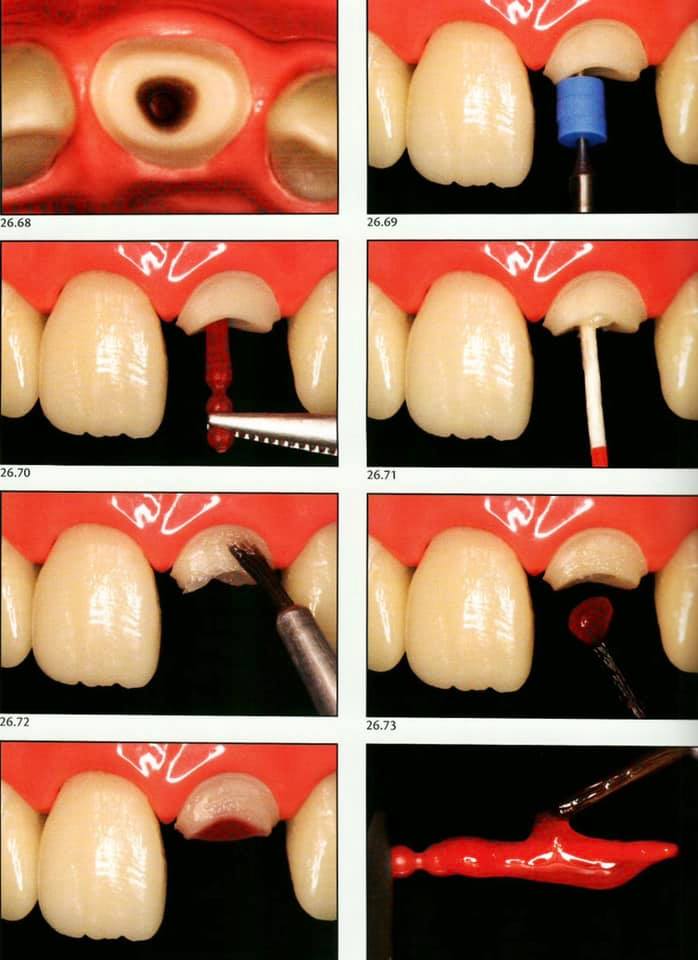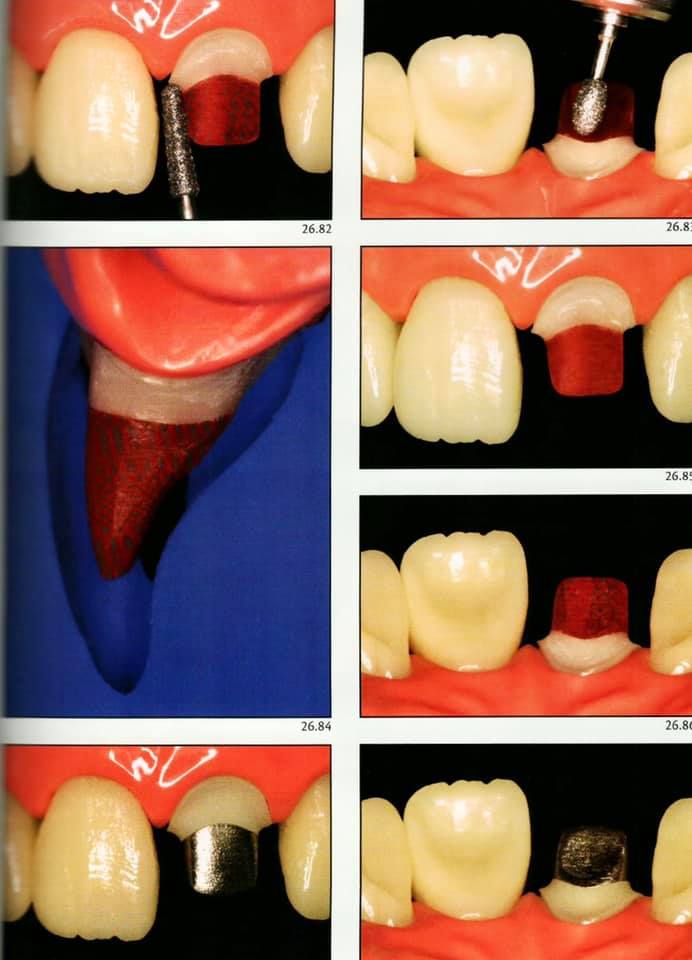In this sequence, we tried to simulate a severely decayed tooth.
In such situations, despite the versatility of fiber posts, it is preferable to use cast cores, usually metallic, although it is possible to fabricate ceramic or metal-ceramic cores ( metallic post and ceramic core ), especially in regions of high esthetic expectations.
 The main disadvantage of cast metal posts in relation to fiber posts is the modulus of elasticity of the metal, much higher than that of dentin, which can lead to stress concentration and root fracture.
The main disadvantage of cast metal posts in relation to fiber posts is the modulus of elasticity of the metal, much higher than that of dentin, which can lead to stress concentration and root fracture. 
So, let’s get started,, 
 The preparation of the root canal starts in a manner similar to that recommended for other types of posts, with the filling material being removed to the level planned in the radiography.
The preparation of the root canal starts in a manner similar to that recommended for other types of posts, with the filling material being removed to the level planned in the radiography. Then it is necessary to create a pattern for casting the acrylic/wax core. Thus, a prefabricated acrylic/plastic post is inserted into the canal and adjusted if necessary.
Then it is necessary to create a pattern for casting the acrylic/wax core. Thus, a prefabricated acrylic/plastic post is inserted into the canal and adjusted if necessary. The remnant tooth surface is lubricated with petroleum jelly, which is applied with absorbent paper points to the canal and brushes to the other surfaces to minimize the risk of retention or wax once it gets hard or during polymerization of the acrylic.
The remnant tooth surface is lubricated with petroleum jelly, which is applied with absorbent paper points to the canal and brushes to the other surfaces to minimize the risk of retention or wax once it gets hard or during polymerization of the acrylic. Small acrylic/wax beads are then applied inside the canal and on the surface of the post and then placed into position.
Small acrylic/wax beads are then applied inside the canal and on the surface of the post and then placed into position.
 Thus, the preparation depth should always be adapted to the restorative system employed, since the amount of grinding dictates the thickness available for the coping and the ceramic veneering in the future restoration. An interesting approach for checking the amount of space available in the preparation is by using “ a silicone guide “, from the unprepared tooth or the diagnostic wax-up.
Thus, the preparation depth should always be adapted to the restorative system employed, since the amount of grinding dictates the thickness available for the coping and the ceramic veneering in the future restoration. An interesting approach for checking the amount of space available in the preparation is by using “ a silicone guide “, from the unprepared tooth or the diagnostic wax-up.
 With the pattern properly adapted to the buccal and palatal aspects, the preparation is complete.
With the pattern properly adapted to the buccal and palatal aspects, the preparation is complete.  After casting in the laboratory by the lost wax technique, using preferably noble or semi-noble metal alloys, the core must be tried-in.
After casting in the laboratory by the lost wax technique, using preferably noble or semi-noble metal alloys, the core must be tried-in.  If minor adjustments are needed, they must be carried out prior to cementation, to minimize the interfacial stress which inevitably occurs if adjustments are performed on a freshly cemented post and core.
If minor adjustments are needed, they must be carried out prior to cementation, to minimize the interfacial stress which inevitably occurs if adjustments are performed on a freshly cemented post and core. It is worth mentioning once again that these disadvantages can be avoided by sending the laboratory a pattern as close as possible to the final shape of the preparation.
It is worth mentioning once again that these disadvantages can be avoided by sending the laboratory a pattern as close as possible to the final shape of the preparation.  With the core suitably adapted and adjusted, conventional or adhesive cementation is performed according to the preference of the practitioner.
With the core suitably adapted and adjusted, conventional or adhesive cementation is performed according to the preference of the practitioner.
Stay tuned for a video explaining lab procedures and how to implement cast metal posts,,

Islam Zakzouk
DSefa is a blog that's dedicated to bringing you high quality health, lifestyle tutorial and resources on different categories. It's main forus on user experience.
















I need download this
ReplyDelete